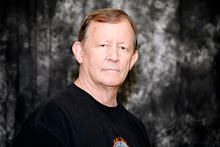Digital Photography Success!
It was only a few short years ago that digital photography was considered little more than electronic gimmickry. A cute little electronic box that could instantly save photos into digital format that could be viewed on your desktop, but nothing of the kind of quality that could compete with real photography. In fact, sophisticated electronic cameras such as the Nikon 6006 or the 8008, and Canon's Elon SLR's (single lens reflex) cameras were just coming into their own in the early 90s.
As digital cameras began appearing on the scene in the latter to late 1990s they were nothing more than novelties capable of producing a picture about 1/2 the quality of film cameras at best. Then high resolution digital SLRs finally burst onto the scene but were so expensive that most professional photographers were unable to afford them. Most photographers simply used film cameras, scanned the slides or negatives and then they were able to obtain a high quality digital photo.
The first affordable digital SLR that I saw was the Canon Digital Rebel in 2003 or 2004 and sold for $999 with a special digital lens. The special digital lens was necessary due to the small sensors that these cameras used causing a 17-50mm lens to operate at about a 1.5 magnification making the lens like a 28-70mm zoom on a normal camera.
These new digital SLRs approached film quality and gave the added satisfaction of being able to critique your work right away. You could make adjustments right in the field without having to wait for your prints to come back from the lab.
When I first got into photography I studied all the latest techniques that I learned in magazines like Popular photography. Then I took several rolls of film, delivered them to the lab and picked them up later only to find that the pictures just didn't look the scene I just shot. Little did I realize when I first started shooting that even the best camera lens can only see about 1/10 the color range that the human eye can see. This is why you can see in the dark, but the camera lens can not. More about night photography later.
So now you have your instant pictures to view, but the process doesn't stop there. With digital pictures you still have to download them to your computer and load them into an imaging program such as the one that came on a disk with the camera or a more sophisticated program like Adobe Photoshop. Your camera's included software is limited but quite adequate for the average snap shooter.
So in review to get started in digital photography you need:
1. A decent camera (preferably a SLR with interchangeable lens).
2. A computer with adequate memory and storage.
3. An imaging software program.
Now you are ready to begin the basics which are outlined in some of the available electronic books available in pdf format such as Digital Photography Success!

No comments:
Post a Comment